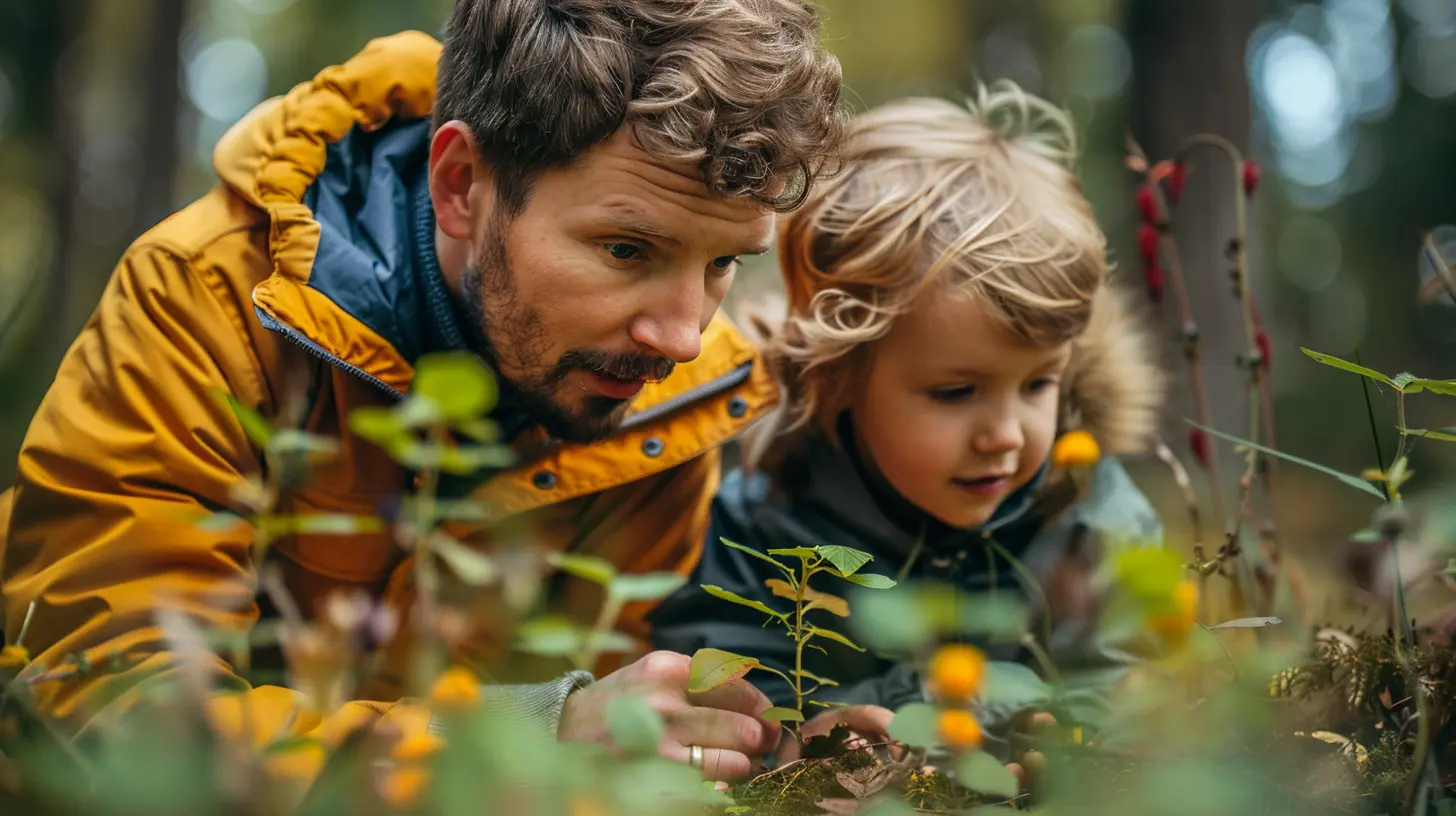Encouraging Curiosity: Tips for Parents
2 May 2025
Curiosity is the spark that fuels learning. It’s what drives kids to ask “why” a hundred times a day and keeps them engaged in the world around them. But in today’s fast-paced, tech-driven world, it’s easy for curiosity to fade if it’s not nurtured.
As a parent, you play a crucial role in keeping that spark alive. But how do you do it without making learning feel like a chore? Let’s talk about practical ways to encourage curiosity in your child—without turning your home into a classroom. 
Why Is Curiosity So Important?
Curiosity isn’t just about asking questions; it’s the foundation of lifelong learning. A curious child is more likely to:✅ Love learning rather than see it as a burden
✅ Think creatively and solve problems
✅ Be open to new experiences and perspectives
✅ Develop strong critical thinking skills
The best part? Curiosity-driven learning sticks. When kids explore topics they’re genuinely interested in, they absorb information like sponges. So instead of forcing them to memorize facts, let's focus on keeping their natural curiosity alive. 
How to Encourage Curiosity in Your Child

1. Answer Their Questions—Even the Endless Ones
We’ve all been there. The never-ending stream of "Why is the sky blue?" and "Where do stars go during the day?" can be exhausting. But every question is a learning opportunity.Instead of brushing them off with, "Because it just is," try responding with, "That’s a great question! What do you think?" This makes them feel involved and critical thinking kicks in. If you don’t know the answer, look it up together—showing them that learning never stops.
2. Let Them Get Bored
Believe it or not, boredom is a secret ingredient to curiosity. When kids have nothing to do, they start exploring, imagining, and problem-solving on their own.Instead of filling every moment with structured activities, let them have some unstructured, screen-free time. You'll be amazed at what their minds come up with when left to their own devices (the mental kind, not the digital kind).
3. Encourage Exploration and Hands-On Learning
Kids learn best when they can touch, build, and experiment. Hands-on experiences make learning fun and memorable.Try:
- Taking them to museums, zoos, or science centers
- Engaging in DIY science experiments at home
- Letting them help with cooking (math and science in action!)
- Building things together with LEGO or other open-ended toys
These experiences spark curiosity far more than worksheets ever could.
4. Ask Open-Ended Questions
Encourage curiosity by flipping the script and asking them questions. Instead of yes/no questions like "Did you have fun at school?", try:- "What was the most interesting thing you learned today?"
- "If you could invent something, what would it do?"
- "How do you think that works?"
Open-ended questions make kids think, analyze, and develop their ideas—essential skills for a curious mind.
5. Model Curiosity Yourself
Kids watch and imitate everything you do. If they see you excited about discovering new things, they’ll follow suit.The next time you come across something interesting, share your excitement:
- "Wow, I just read something cool!"
- "I wonder how this works… let's find out!"
- "I’ve never tried this before, want to try it with me?"
Curiosity is contagious. When they see you exploring the world with enthusiasm, they’ll do the same.
6. Let Them Follow Their Passions
Ever notice how kids go through obsession phases? One month it’s dinosaurs, the next it’s space, then suddenly it’s sharks. Instead of dismissing these interests as “just a phase,” embrace them!Stock up on books, documentaries, and activities related to their current obsession. When kids dive deep into something they love, they develop research skills without even realizing it.
Who knows? Today's phase might turn into tomorrow’s career.
7. Encourage Mistakes and Failure
A fear of failure kills curiosity. If kids believe they have to get everything "right" on the first try, they’ll stop exploring.Teach them that failing is just part of learning. When they mess up, instead of saying, "That was wrong," try:
- "What do you think went wrong?"
- "What could we do differently next time?"
- "Great effort! What did you learn from this?"
This shift in mindset helps them view challenges as opportunities rather than setbacks.
8. Introduce Them to Different Perspectives
Curiosity thrives when kids are exposed to different cultures, ideas, and ways of thinking. Here’s how you can do that:- Read books from different cultures
- Try new foods together
- Learn a few words in another language
- Watch documentaries on how people live in different parts of the world
The more perspectives they encounter, the more curious they’ll become about the world around them.
9. Limit Screen Time and Passive Entertainment
Endless hours of mindless scrolling and binge-watching don’t leave room for curiosity. While tech isn’t the enemy, too much passive consumption dulls creativity.Instead of banning screens entirely, encourage tech use that sparks curiosity:
✅ Educational games and apps
✅ Science and nature documentaries
✅ Coding programs
✅ Online courses for kids
The goal isn’t to eliminate screens—it’s to make sure they’re being used in a way that encourages learning.
10. Make Everyday Life a Learning Experience
You don’t need fancy toys or expensive tutors to spark curiosity. Everyday life is full of hidden learning opportunities.- At the grocery store? Let them weigh fruits, compare prices, or guess where foods come from.
- Cooking dinner? Talk about how ingredients change when heated.
- Taking a walk? Point out cool plants, birds, or cloud shapes and ask what they think about them.
When kids see that learning isn’t just for school, they’ll stay curious far beyond the classroom. 
Final Thoughts
Encouraging curiosity isn’t about pushing facts—it’s about fostering a mindset of exploration, wonder, and a love for learning.Give your child the freedom to ask questions, make mistakes, and explore the world at their own pace. The more you support their curiosity, the more confident and independent they’ll become in their learning journey.
So the next time your child asks you a random, off-the-wall question, resist the urge to shut it down. Instead, dive in with them—you might just learn something new yourself.
all images in this post were generated using AI tools
Category:
Parent InvolvementAuthor:

Olivia Chapman
Discussion
rate this article
6 comments
Kai Montgomery
Great insights! Encouraging curiosity at home is essential for fostering a love of learning. Simple activities like asking open-ended questions or exploring nature can make a big difference. Thank you for sharing!
May 16, 2025 at 4:28 AM

Olivia Chapman
Thank you for your thoughtful comment! I'm glad you found the tips helpful. Encouraging curiosity truly does play a vital role in a child's love for learning!
Faelith Williams
Curiosity is the gateway to lifelong learning. By nurturing a child's natural inquisitiveness, parents can foster critical thinking, creativity, and resilience. Instead of providing answers, encourage questions. This cultivates a mindset that seeks understanding, empowering children to explore the world with wonder and confidence.
May 13, 2025 at 9:06 PM

Olivia Chapman
Absolutely! Nurturing curiosity in children not only enhances their learning but also equips them with essential life skills. Encouraging questions fosters a love for exploration and resilience, setting them up for lifelong success.
Kayla McKale
This article beautifully highlights the importance of fostering curiosity in children. As a parent, I’ve realized that nurturing their questions and explorations can lead to deeper learning and stronger connections. Thank you!
May 11, 2025 at 6:28 PM

Olivia Chapman
Thank you for your thoughtful comment! I'm glad you found the article helpful in nurturing curiosity in your children. Your support means a lot!
Idris McVey
Curiosity sparks joy, nurture it daily!
May 10, 2025 at 8:37 PM

Olivia Chapman
Absolutely! Cultivating curiosity can lead to endless joy and discovery. Thank you for the reminder!
Bethany McCarty
What a fantastic article! Encouraging curiosity in our children is such a rewarding journey. The tips are not only practical but also fun! Let’s inspire our little ones to explore, ask questions, and discover the world around them. Here’s to fostering their endless wonder! 🌟
May 9, 2025 at 11:25 AM

Olivia Chapman
Thank you so much! I’m glad you found the tips helpful and inspiring. Here’s to nurturing that curiosity together! 🌟
Casey Hernandez
This article beautifully highlights the importance of nurturing curiosity in our children. By fostering an environment where questions are welcomed and explored, we can ignite a lifelong love of learning. Let's celebrate our children's inquisitiveness and support their journey of discovery!
May 8, 2025 at 7:48 PM

Olivia Chapman
Thank you for your thoughtful comment! I completely agree—nurturing curiosity is key to fostering a lifelong love of learning in our children. Let’s keep encouraging their inquisitive nature!




